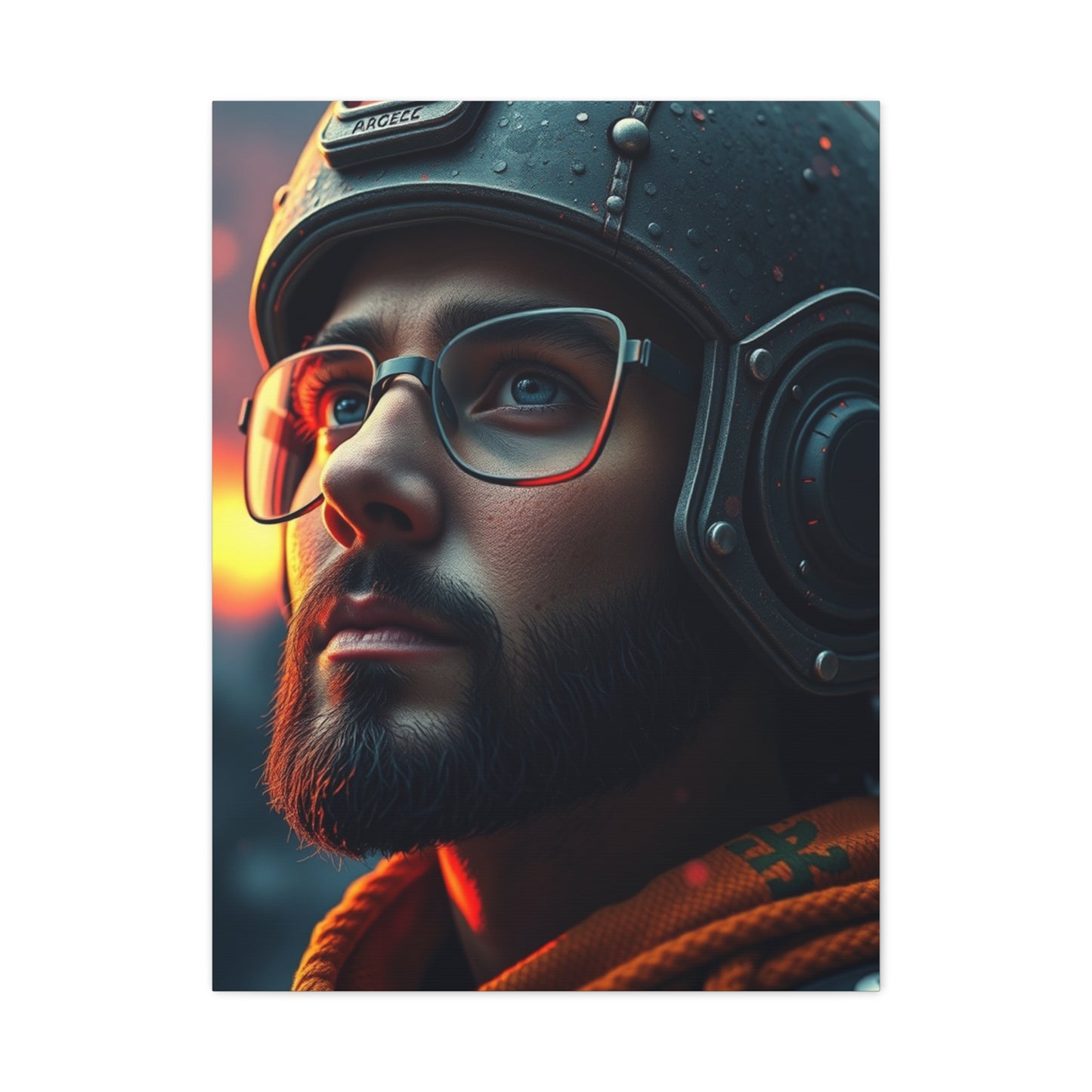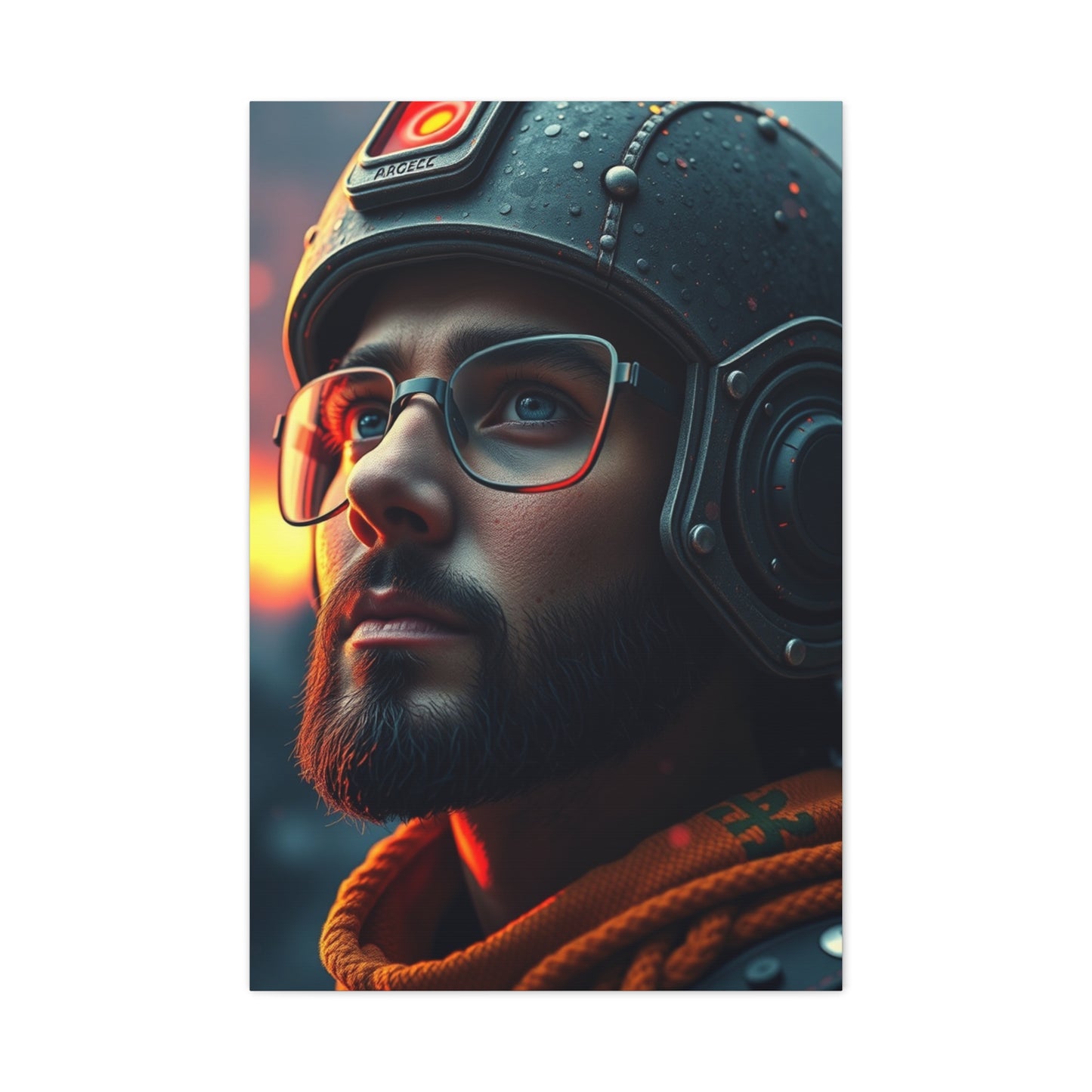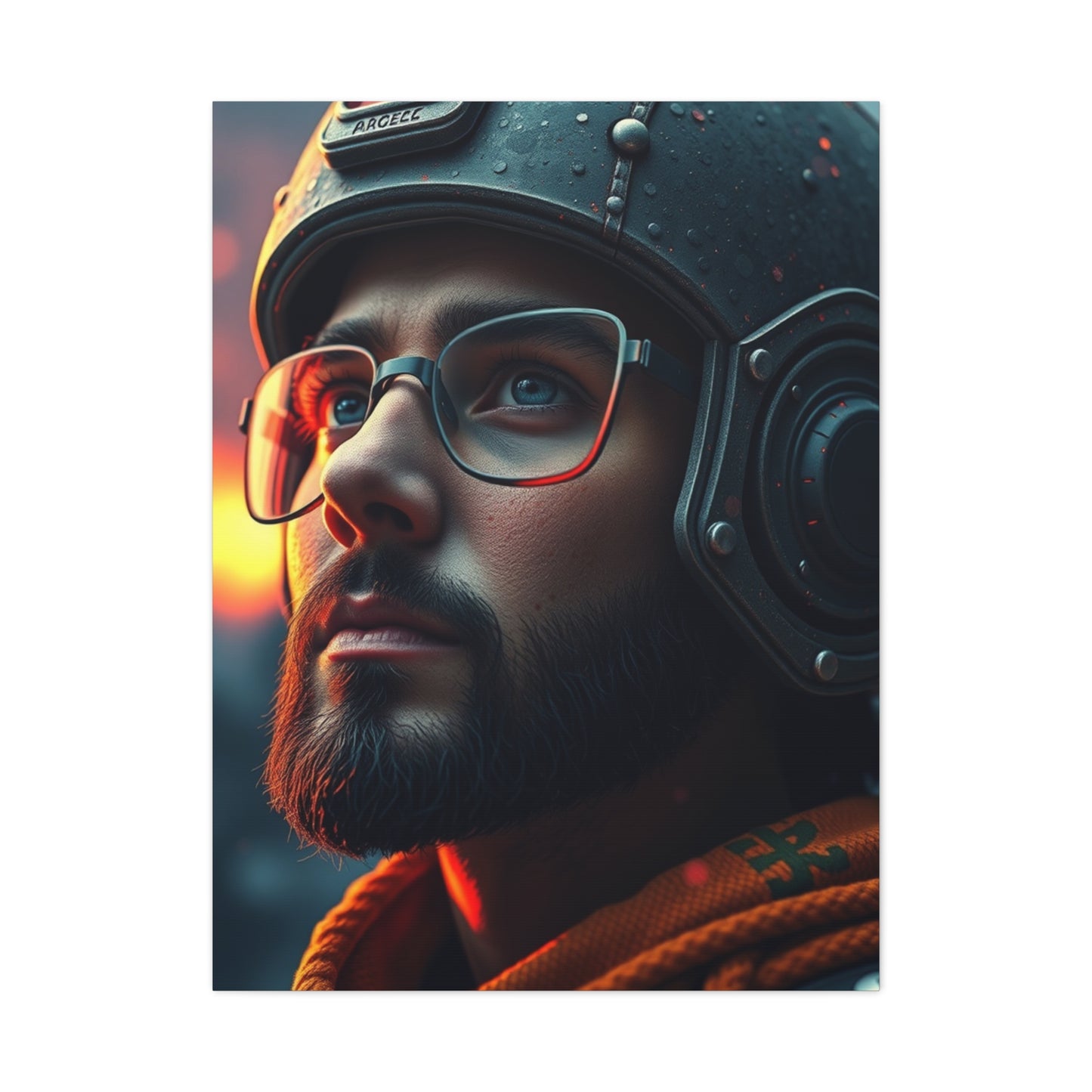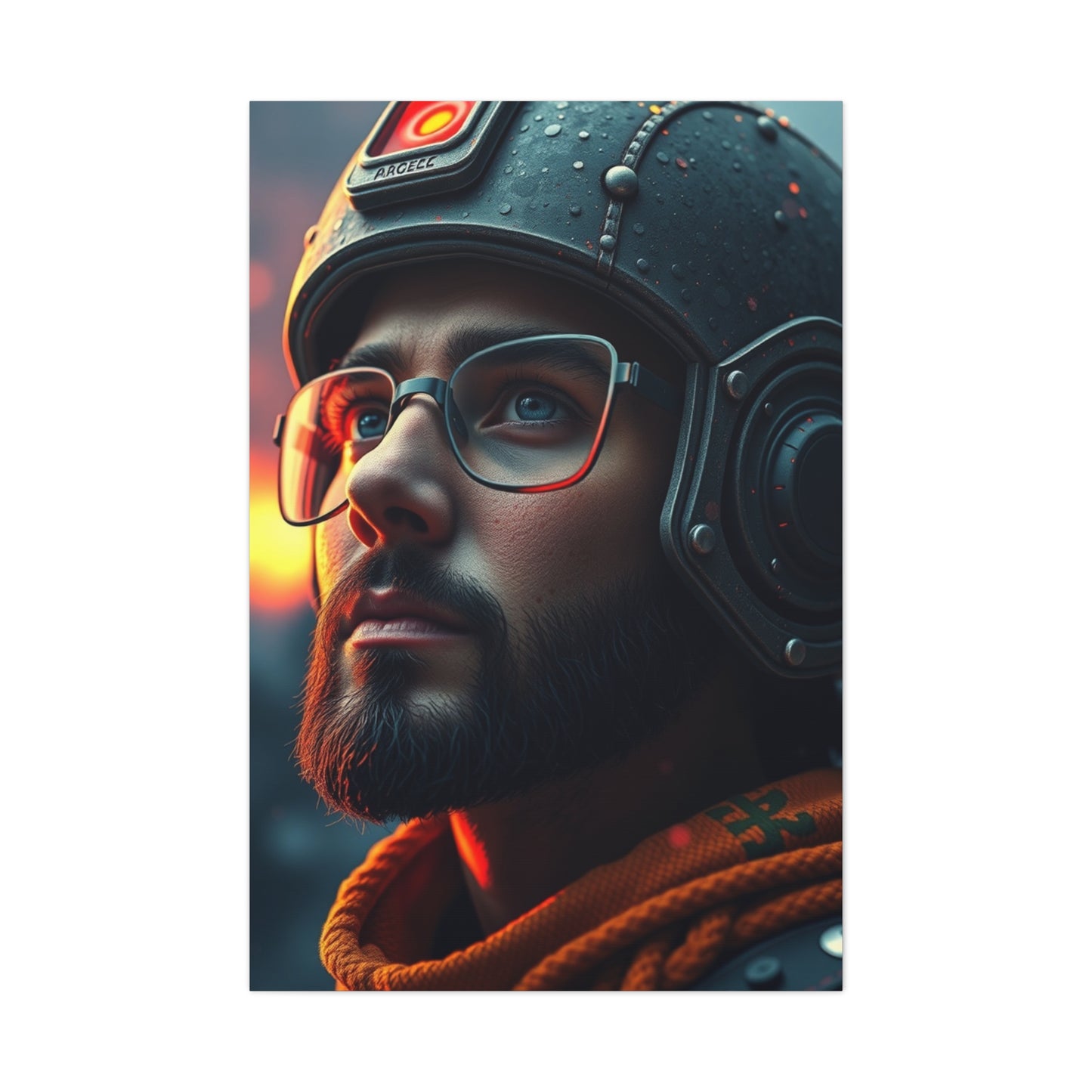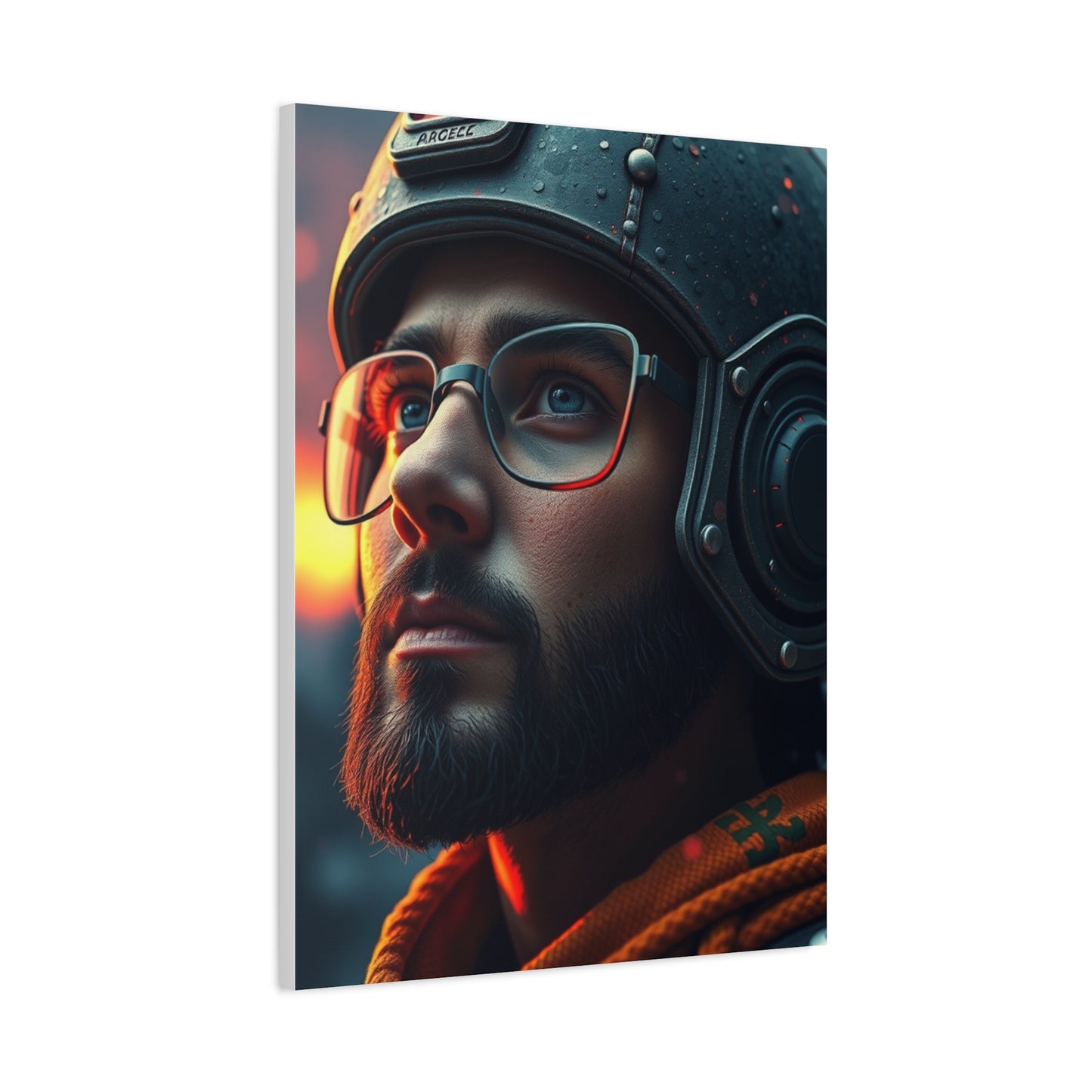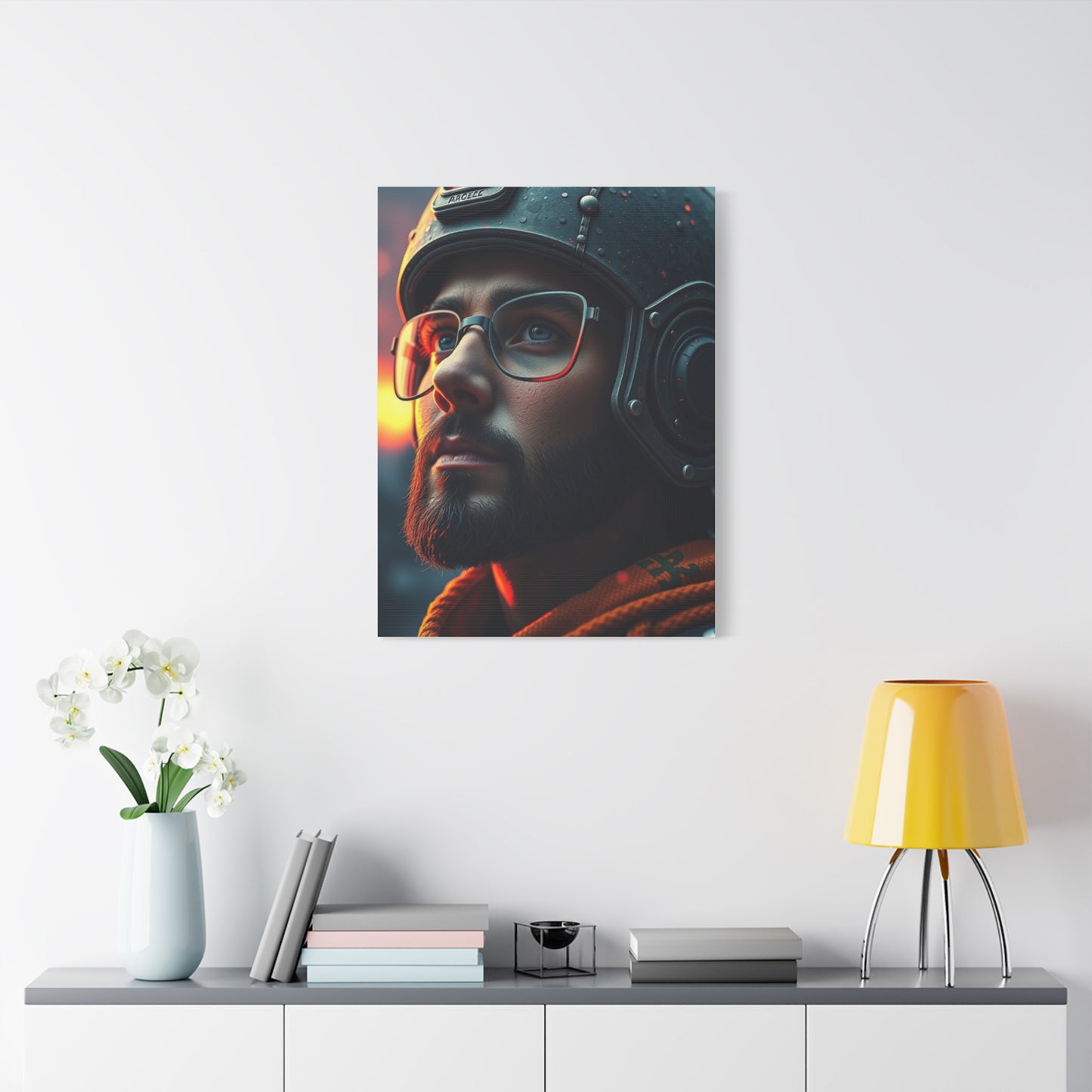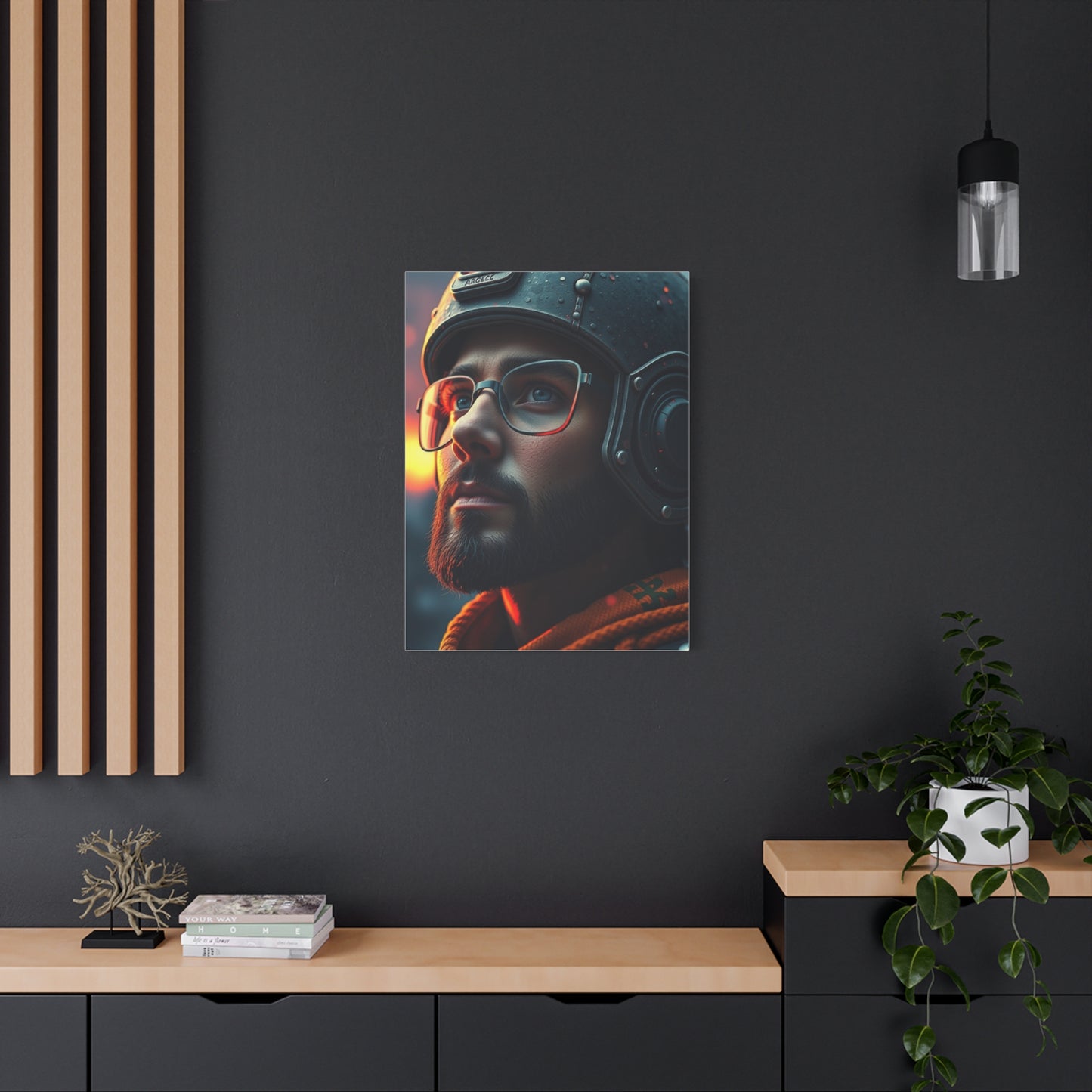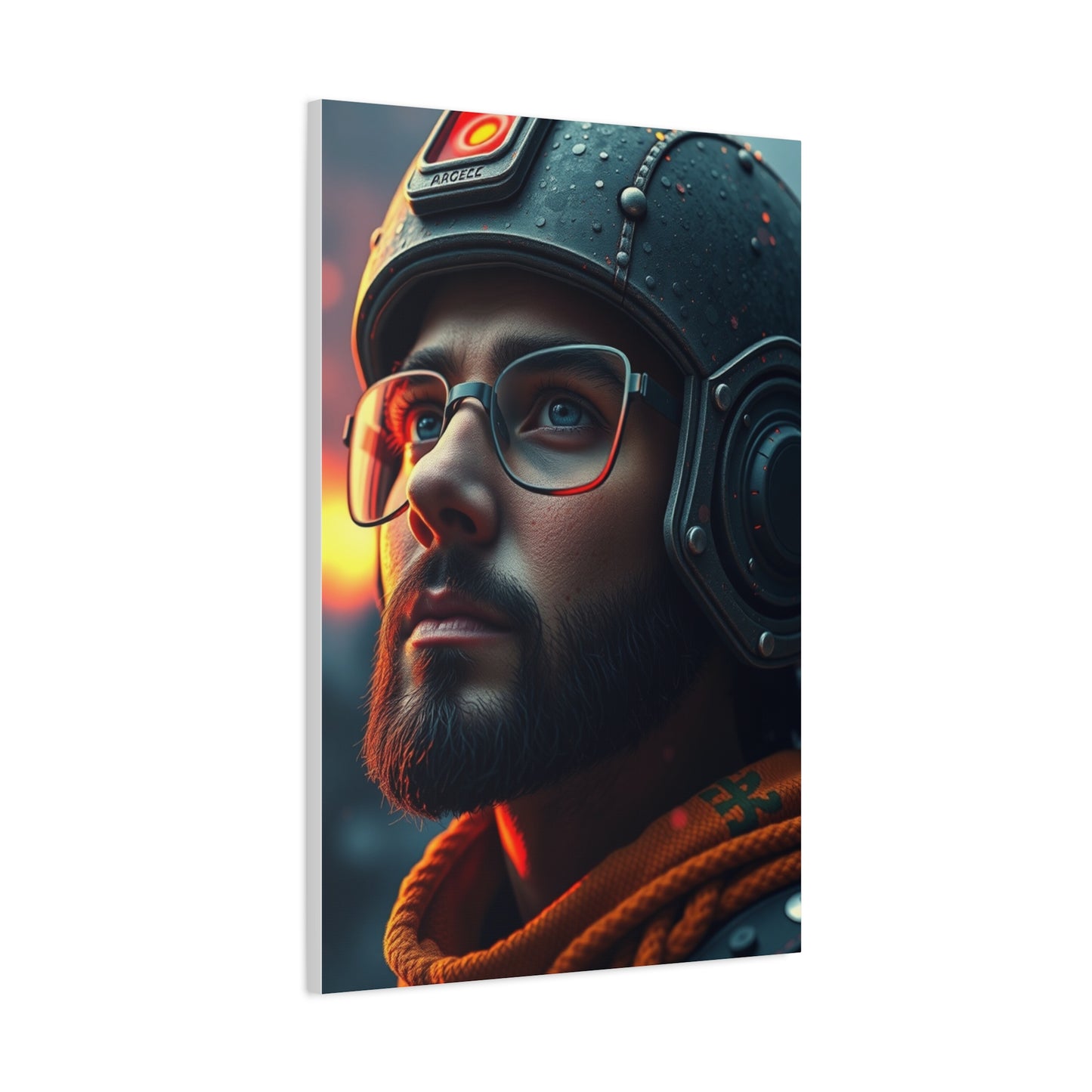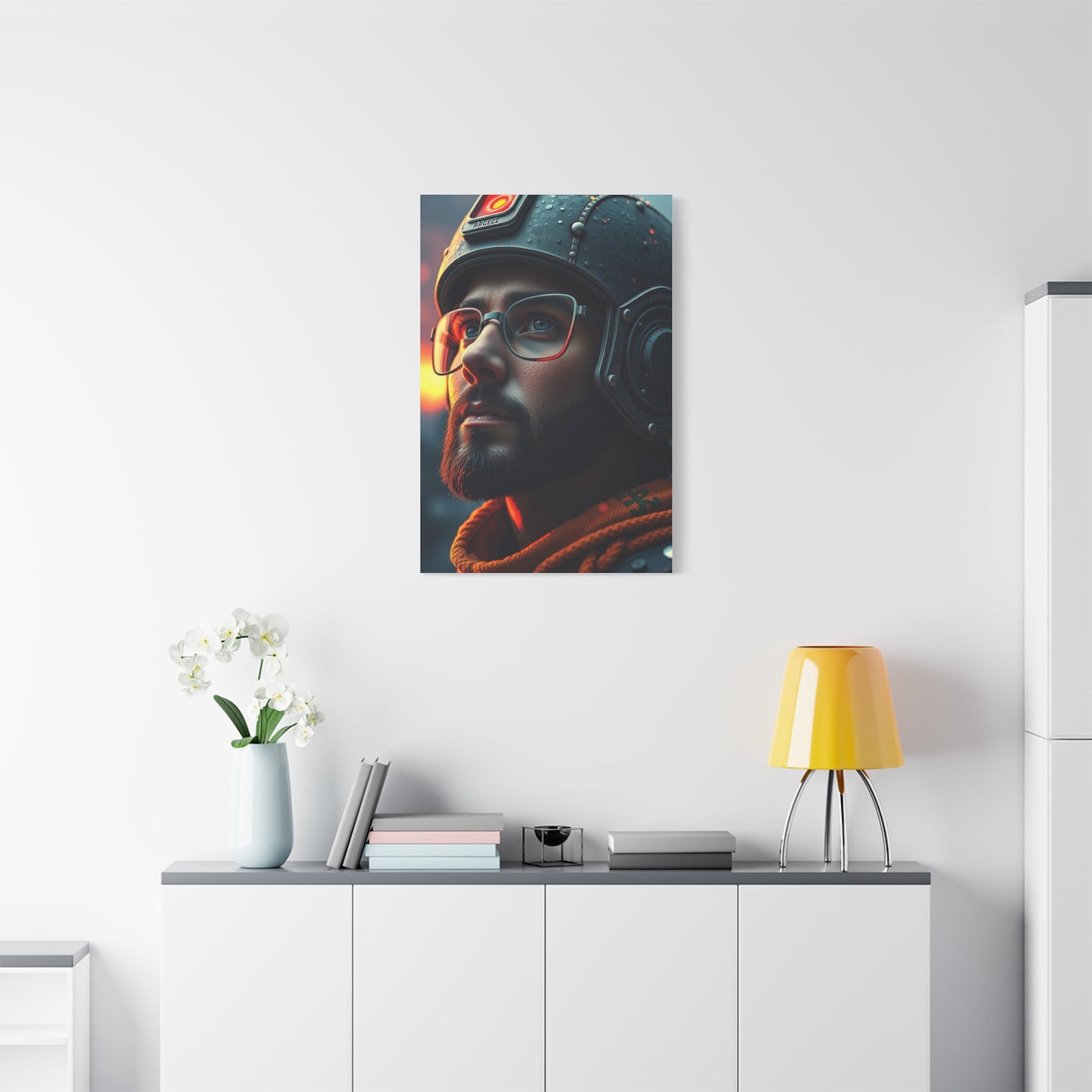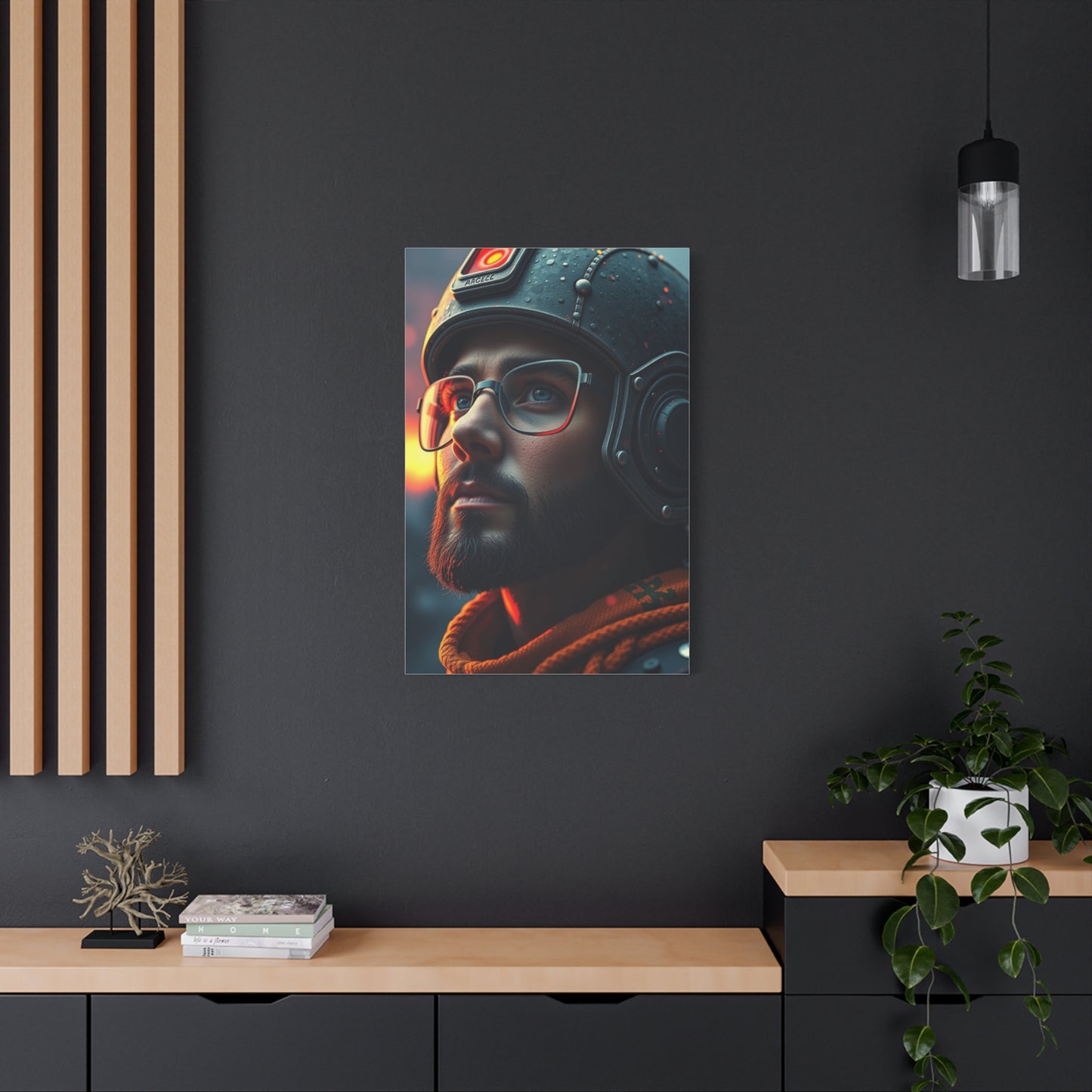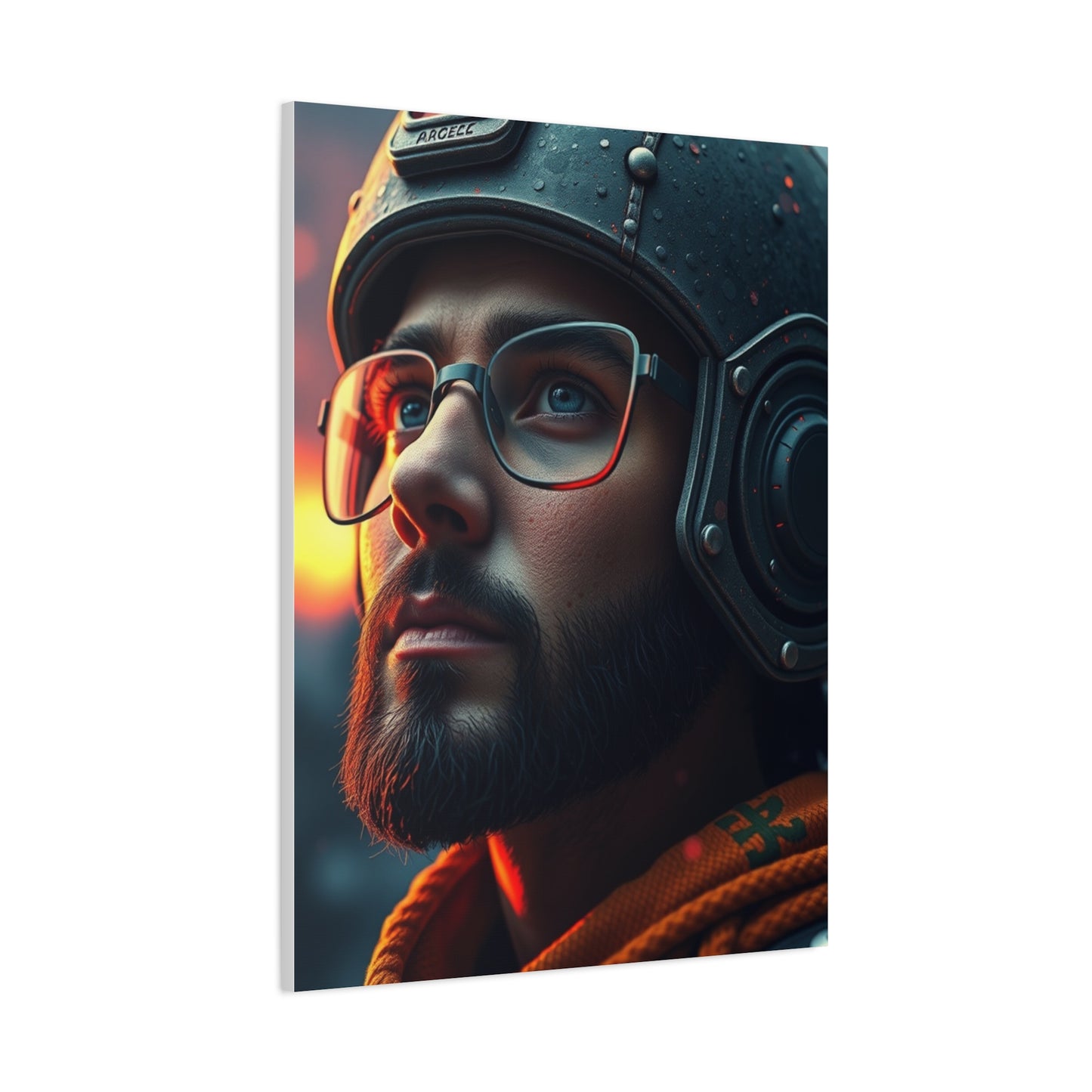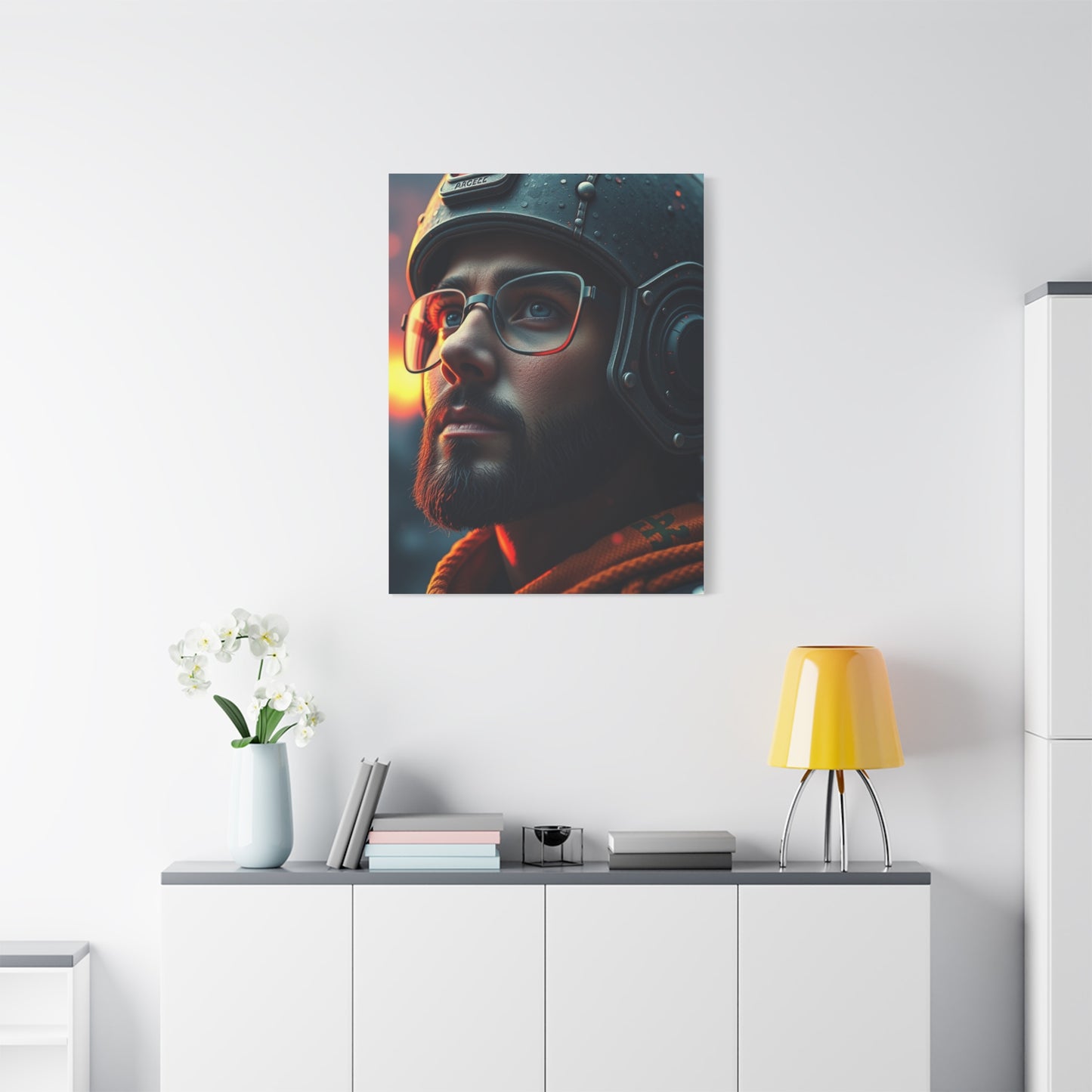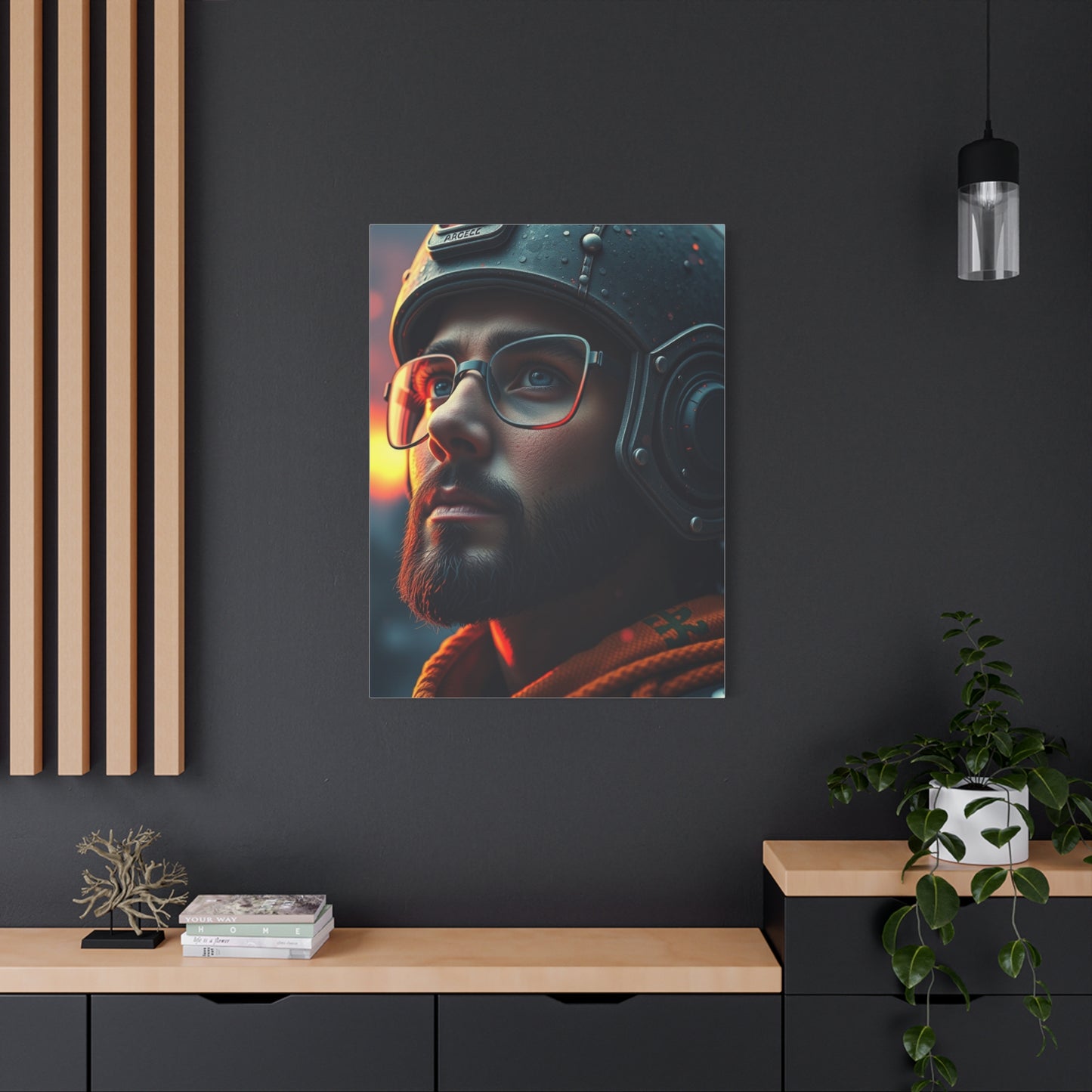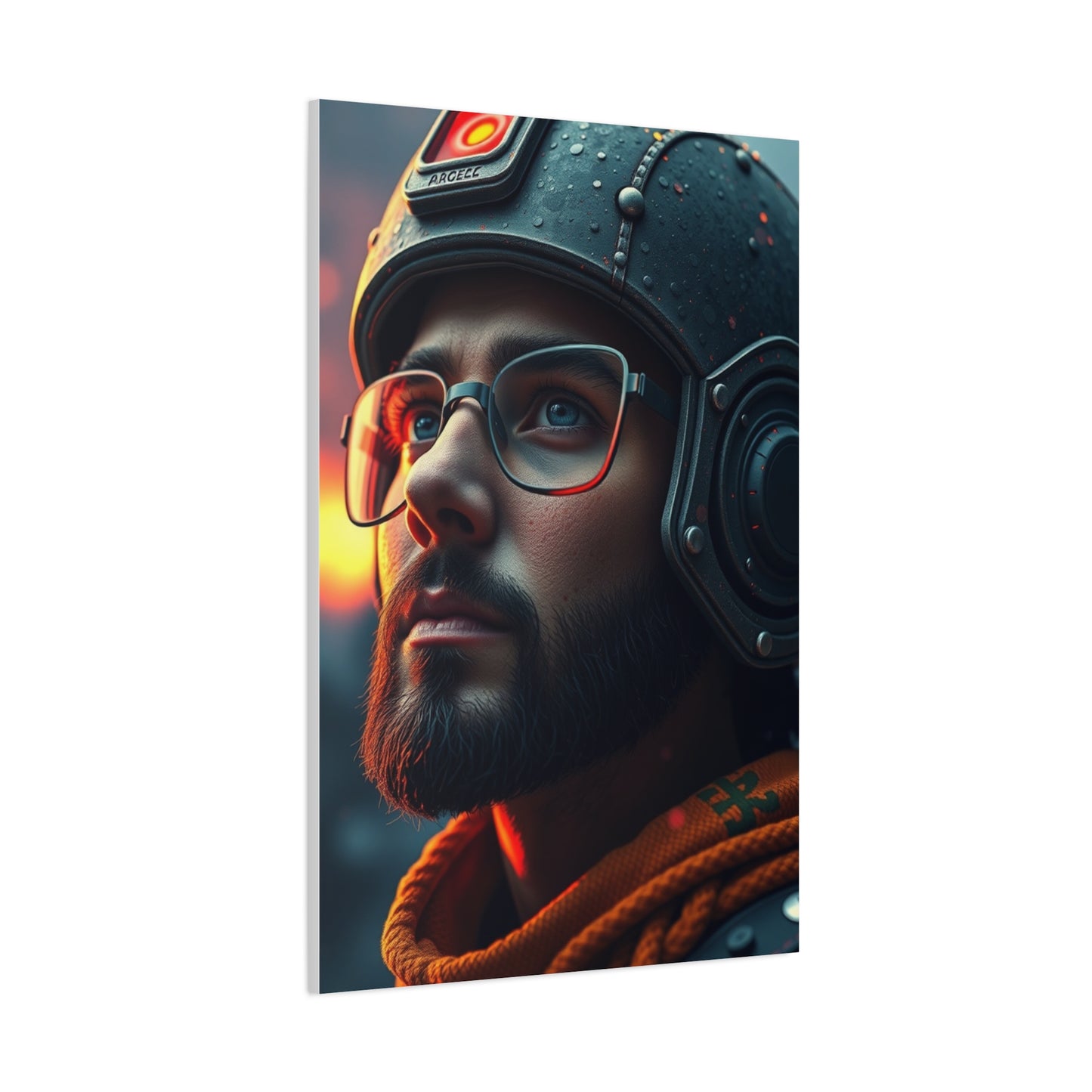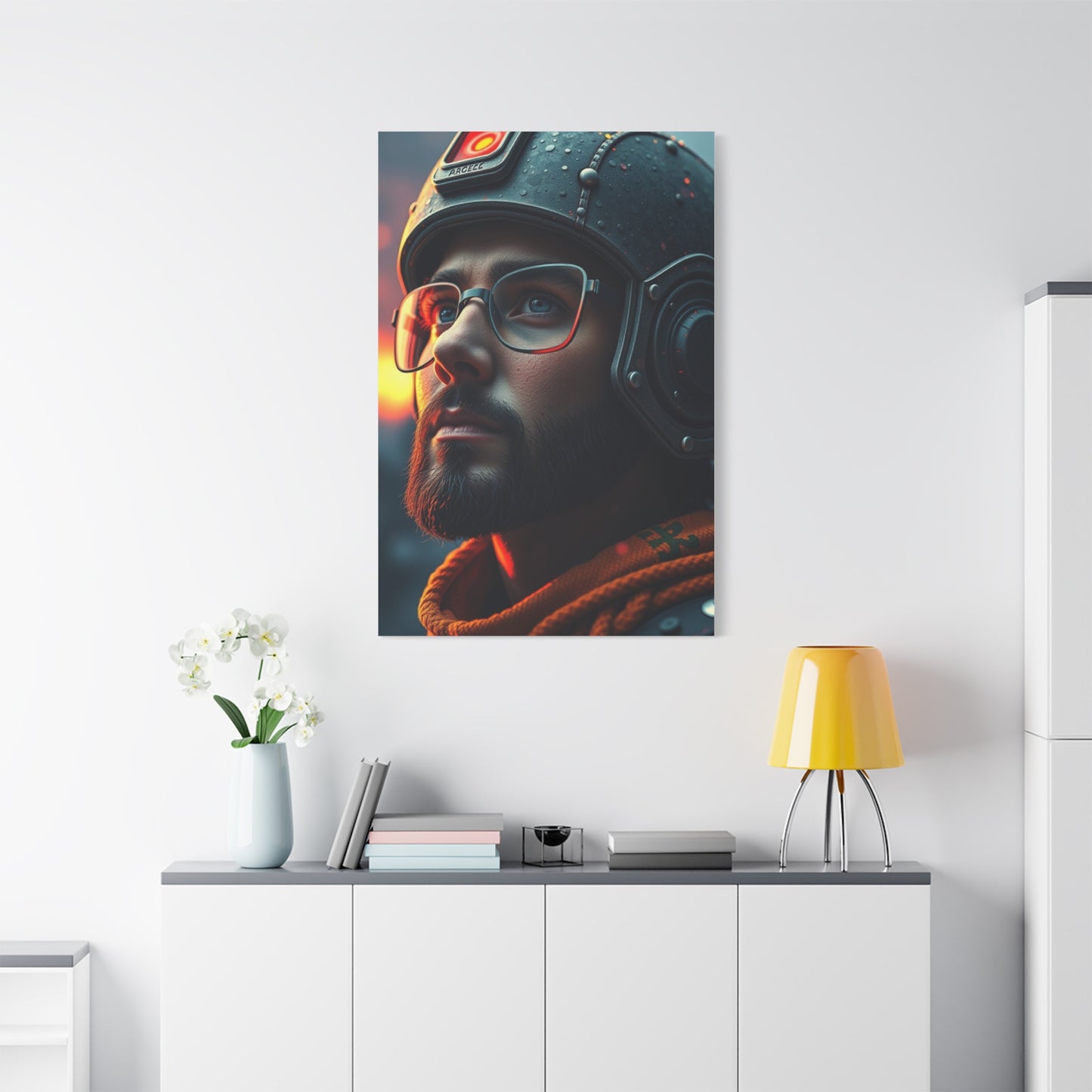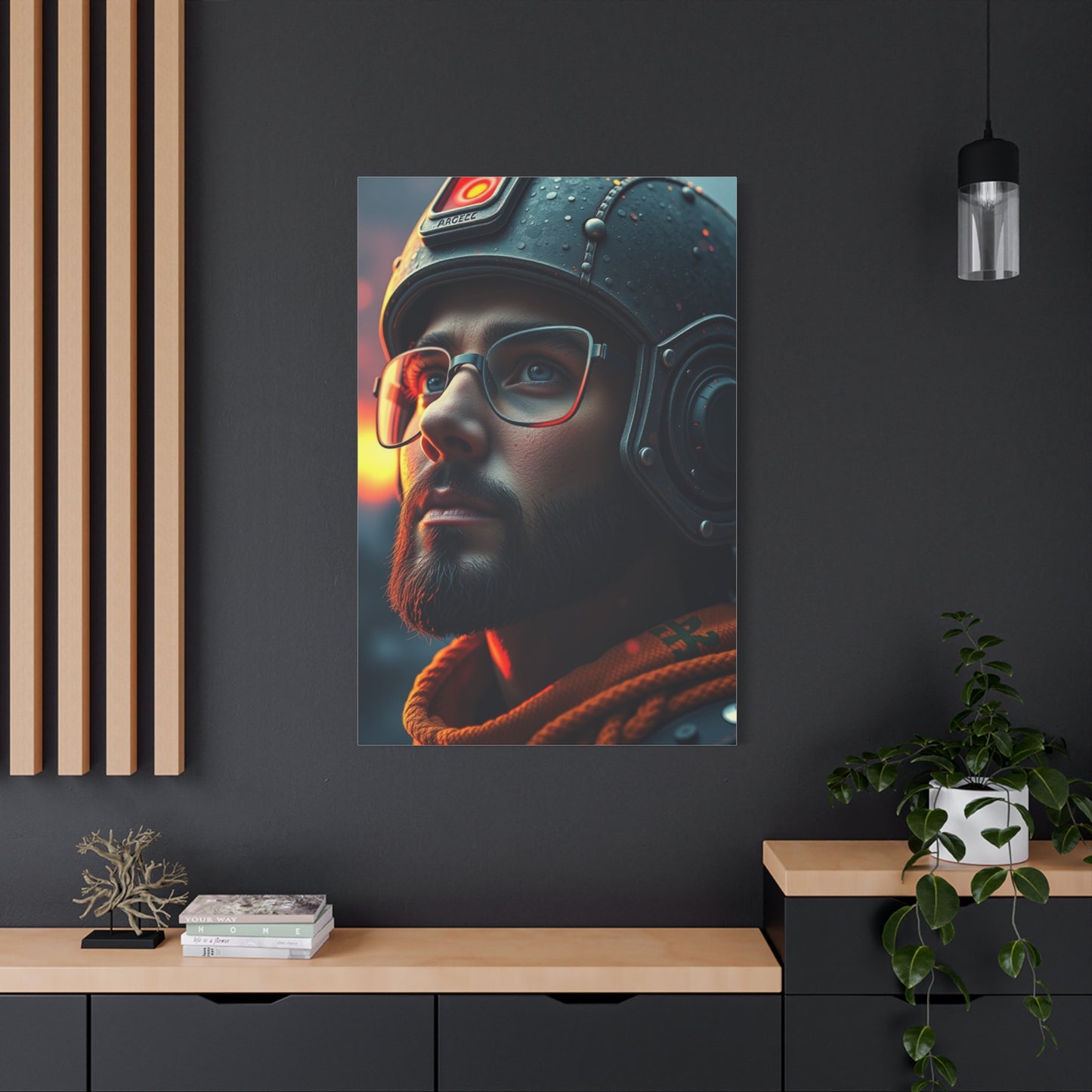Visual Flow: Harmonizing Wall Space with Refined Pixel Panoramas
The convergence of digital artistry and contemporary home aesthetics has birthed a revolutionary form of visual expression that seamlessly blends technological precision with artistic sophistication. Pixel panorama wall art represents more than just decorative elements; it embodies a transformative approach to how we perceive and integrate digital craftsmanship into our living environments. This emerging art form captures the essence of panoramic vistas through meticulously crafted pixelated compositions that deliver both visual impact and emotional resonance.
Contemporary homeowners increasingly seek artwork that reflects the digital age while maintaining artistic integrity and aesthetic appeal. Pixel panorama wall art fulfills this desire by offering a unique synthesis of traditional panoramic photography principles with modern digital artistry. The appeal lies not merely in the nostalgic charm of pixelated aesthetics but in the sophisticated execution that elevates these pieces from simple digital reproductions to genuine artistic statements.
The evolution of pixel art from its humble beginnings in early computer graphics to its current status as a legitimate art form demonstrates the medium's versatility and enduring appeal. Modern pixel panorama wall art transcends the limitations of early digital graphics by incorporating advanced color palettes, sophisticated composition techniques, and refined detail work that rivals traditional art forms in both complexity and visual impact.
Historical Context and Artistic Evolution
The journey of pixel art from functional necessity to artistic choice reveals a fascinating trajectory that mirrors the broader evolution of digital culture. In the early days of computing, pixel art emerged from technical constraints rather than aesthetic preferences. Limited memory capacity and processing power forced artists and designers to work within strict parameters, creating visually compelling images using minimal resources.
During the 1980s and 1990s, video game developers pioneered techniques that would later influence contemporary pixel art aesthetics. These early digital artists learned to convey complex emotions, detailed environments, and dynamic action sequences within severe technical limitations. Their innovations in color theory, composition, and visual storytelling established foundational principles that continue to inform modern pixel art creation.
The transition from necessity-driven pixel art to choice-driven artistic expression occurred gradually as technology advanced and constraints loosened. Rather than abandoning pixelated aesthetics in favor of higher resolution alternatives, many artists recognized the unique visual qualities and emotional impact that pixelated imagery could provide. This recognition sparked a renaissance in pixel art that continues to influence contemporary artistic movements.
Modern pixel panorama wall art draws inspiration from this rich historical context while incorporating contemporary artistic sensibilities. Artists working in this medium understand that effective pixel art requires more than technical proficiency; it demands a deep appreciation for the interplay between limitation and creativity that defines the medium's aesthetic appeal.
The panoramic format adds another layer of complexity and visual interest to pixel art compositions. Panoramic imagery has long been associated with epic landscapes, sweeping vistas, and immersive visual experiences. When combined with pixelated aesthetics, panoramic compositions create a unique tension between the expansive scope of the image and the intimate, detailed nature of pixel art construction.
Contemporary artists working in pixel panorama wall art often reference historical art movements while maintaining distinctly modern sensibilities. The careful attention to color relationships echoes Impressionist techniques, while the geometric precision of pixel construction reflects Modernist principles. This synthesis of historical reference and contemporary execution creates artwork that resonates with diverse audiences and aesthetic preferences.
Technical Foundations and Artistic Principles
Creating exceptional pixel panorama wall art requires mastery of both technical skills and artistic principles that distinguish professional work from amateur attempts. The technical foundation begins with resolution considerations that balance detail preservation with the characteristic pixelated aesthetic. Artists must carefully select pixel densities that maintain the distinct pixelated appearance while providing sufficient detail to support panoramic compositions.
Color palette selection represents another critical technical consideration in pixel panorama wall art creation. Unlike traditional digital art forms that can utilize millions of colors, effective pixel art typically employs restricted palettes that enhance visual coherence and maintain the medium's distinctive character. Master pixel artists develop sophisticated color theories that maximize visual impact within these constraints.
The panoramic format introduces unique compositional challenges that require specialized techniques and artistic approaches. Horizontal compositions must maintain visual interest across extended formats while avoiding monotony or visual dead zones. Artists achieve this through careful attention to rhythm, balance, and focal point distribution that guides viewer attention across the entire composition.
Lighting and atmospheric effects in pixel panorama wall art demand particular expertise due to the medium's inherent limitations and opportunities. Pixelated aesthetics can effectively convey mood and atmosphere through careful manipulation of color temperature, contrast relationships, and detail distribution. Skilled artists leverage these techniques to create immersive environments that transport viewers beyond the physical constraints of the artwork.
Detail hierarchy represents a fundamental principle in successful pixel panorama wall art creation. Artists must strategically distribute detail levels to create visual depth and maintain viewer engagement without overwhelming the composition. Foreground elements typically receive higher detail treatment, while background areas utilize simplified forms that suggest rather than explicitly define environmental features.
The technical execution of pixel panorama wall art often involves sophisticated digital tools and workflows that optimize both creative flexibility and output quality. Professional artists develop custom brushes, color palettes, and workflow systems that streamline the creation process while maintaining artistic control over every pixel placement.
Contemporary Aesthetic Movements and Influences
The contemporary art world's embrace of digital media has created fertile ground for pixel panorama wall art to flourish as a legitimate artistic movement. This acceptance reflects broader cultural shifts toward recognizing digital craftsmanship as equivalent to traditional artistic techniques in terms of skill, creativity, and cultural significance.
Modern pixel panorama wall art draws inspiration from multiple contemporary art movements, creating hybrid aesthetics that appeal to diverse artistic sensibilities. The geometric precision inherent in pixel art aligns with Minimalist principles, while the nostalgic qualities of pixelated imagery resonate with Postmodern appropriation strategies. This multi-faceted appeal contributes to the medium's growing popularity among collectors and art enthusiasts.
Environmental themes frequently appear in contemporary pixel panorama wall art, reflecting growing awareness of climate change and natural preservation concerns. Artists use pixelated landscapes to comment on the relationship between digital culture and natural environments, creating works that simultaneously celebrate natural beauty and acknowledge our increasingly mediated relationship with the physical world.
Urban themes also feature prominently in modern pixel panorama wall art, with artists creating pixelated cityscapes that capture the energy and complexity of metropolitan environments. These works often explore themes of technological integration, urban development, and the changing nature of public and private domains in digital age cities.
The influence of photography on pixel panorama wall art cannot be understated, as many artists begin with photographic source material that undergoes careful translation into pixelated form. This process requires sophisticated understanding of both photographic composition and pixel art aesthetics, resulting in works that honor both mediums while creating something entirely new.
Social media and digital culture significantly impact contemporary pixel panorama wall art creation and distribution. Artists working in this medium often develop distinctive visual signatures that perform well in digital environments while maintaining impact when translated to physical wall art installations.
Material Considerations and Production Methods
The translation of digital pixel panorama wall art into physical formats requires careful consideration of materials, printing techniques, and display methods that preserve the artwork's visual integrity and aesthetic impact. Different material choices can dramatically affect how pixel art appears in physical form, making material selection a critical component of the artistic process.
Canvas printing remains popular for pixel panorama wall art due to its ability to soften hard pixel edges while maintaining color vibrancy and detail clarity. The texture of canvas can add subtle depth to pixel art compositions, creating visual interest without compromising the fundamental pixelated aesthetic. However, artists must carefully calibrate color profiles to ensure accurate reproduction of digital color palettes.
Metal printing offers alternative aesthetic possibilities for pixel panorama wall art, particularly for compositions featuring urban or technological themes. The reflective properties of metal substrates can enhance the digital character of pixel art while providing exceptional color saturation and detail sharpness. This format particularly suits contemporary environments with modern design sensibilities.
Acrylic mounting provides another option that emphasizes the clean, geometric qualities inherent in pixel art compositions. The smooth, glossy surface of acrylic enhances color vibrancy while creating a distinctly contemporary appearance that complements modern living environments. The material's clarity also allows for innovative mounting techniques that create floating effects.
Paper-based printing methods offer cost-effective options for pixel panorama wall art reproduction while maintaining high quality standards. Modern printing techniques can achieve exceptional color accuracy and detail preservation on various paper substrates, making pixel art accessible to broader audiences without compromising artistic integrity.
The scale considerations for pixel panorama wall art printing require careful balance between maintaining pixelated character and achieving visual impact appropriate for wall display. Artists must consider viewing distances, room proportions, and lighting conditions when determining optimal print dimensions for their pixel panorama compositions.
Color Theory and Palette Development
Color theory plays a fundamental role in effective pixel panorama wall art creation, with artists developing sophisticated approaches to palette selection that maximize visual impact within the medium's inherent constraints. Unlike traditional art forms that allow unlimited color mixing, pixel art typically employs fixed palettes that require strategic selection and application.
Harmonic color relationships become particularly important in pixel panorama wall art due to the extended horizontal format and the medium's emphasis on color relationships rather than fine detail. Artists must create color progressions that maintain visual interest across panoramic compositions while avoiding jarring transitions that could disrupt the overall harmony.
Temperature relationships in pixel panorama wall art can effectively convey atmospheric conditions and emotional tone. Cool color dominance often suggests distance, tranquility, or technological themes, while warm color emphasis can create intimate, energetic, or nostalgic moods. Skilled artists manipulate these temperature relationships to guide viewer emotional responses.
Contrast management represents another critical aspect of color theory in pixel panorama wall art. The pixelated medium naturally creates high contrast edges between color areas, requiring careful attention to prevent visual harshness while maintaining the characteristic clarity that defines pixel art aesthetics.
Atmospheric perspective techniques adapted for pixel art can create convincing depth illusions in panoramic compositions. Artists achieve this through systematic color desaturation, value compression, and detail reduction in background areas, creating effective depth cues that work within pixelated constraints.
Color symbolism and cultural associations influence pixel panorama wall art creation, with artists considering how color choices might resonate with different audiences and cultural contexts. This awareness allows for more sophisticated artistic communication that extends beyond purely aesthetic considerations.
Composition Strategies for Panoramic Formats
Effective composition in pixel panorama wall art requires specialized techniques that address the unique challenges and opportunities presented by extended horizontal formats. Traditional composition rules must be adapted and expanded to create visually compelling panoramic artworks that maintain viewer engagement across their full width.
The rule of thirds adapts to panoramic formats through multiple division points that create rhythm and visual anchors across the composition. Artists often establish primary focal points at traditional third divisions while creating secondary interest areas that prevent visual monotony in the extended format.
Horizontal flow management becomes critical in panoramic compositions, with artists developing techniques to guide viewer attention across the entire artwork without creating visual dead zones or awkward transitions. This often involves careful placement of compositional elements that create visual pathways and connection points.
Depth creation in panoramic pixel art requires sophisticated layering techniques that establish clear foreground, middle ground, and background relationships. Artists achieve this through careful manipulation of detail levels, color relationships, and overlapping elements that create convincing spatial illusions within pixelated constraints.
Edge management represents a unique challenge in panoramic compositions, as the extended format creates more prominent edge relationships that can either enhance or detract from the overall composition. Skilled artists develop techniques for managing these edge relationships to create cohesive, balanced compositions.
Rhythmic elements in pixel panorama wall art help maintain visual interest across extended formats by creating patterns, repetitions, and variations that prevent monotony while supporting overall compositional unity. These elements often draw from musical concepts adapted to visual composition.
Environmental Integration and Display Considerations
Successfully integrating pixel panorama wall art into living environments requires careful consideration of architectural features, lighting conditions, and existing aesthetic elements. The unique characteristics of pixelated artwork create both opportunities and challenges for environmental integration that differ from traditional art forms.
Lighting design significantly impacts pixel panorama wall art display effectiveness. The geometric nature of pixel art can create interesting shadow patterns and reflective effects under directional lighting, while ambient lighting may be more suitable for maintaining color accuracy and visual comfort during extended viewing.
Scale relationships between pixel panorama wall art and architectural features require careful evaluation to ensure appropriate visual impact without overwhelming the environment. The horizontal emphasis of panoramic formats naturally complements many architectural elements while requiring adequate wall dimensions for effective display.
Viewing distance considerations become particularly important with pixel panorama wall art due to the medium's detail characteristics and the panoramic format's immersive potential. Artists and collectors must consider primary viewing positions when selecting and positioning artwork to optimize the viewing experience.
Color coordination between pixel panorama wall art and existing environmental elements can either create harmonious integration or establish dynamic contrast relationships, depending on artistic intent and aesthetic preferences. Both approaches can be effective when executed with careful consideration of overall environmental impact.
Cultural Impact and Contemporary Relevance
Pixel panorama wall art reflects broader cultural trends toward nostalgia, digital culture acceptance, and the blending of technological and artistic domains. This artistic movement captures contemporary ambivalence toward technology while celebrating the creative possibilities that digital tools provide.
The growing acceptance of pixel art in fine art contexts reflects changing attitudes toward digital media and computer-generated imagery. Museums, galleries, and collectors increasingly recognize pixel art as a legitimate artistic medium with its own aesthetic principles and cultural significance.
Generational appeal represents another important aspect of pixel panorama wall art's cultural impact. Millennials and Generation X viewers often experience nostalgic connections to pixelated imagery from their gaming experiences, while younger audiences appreciate the aesthetic qualities independent of historical associations.
The democratizing effect of digital art tools has made pixel art creation accessible to broader audiences, contributing to a diverse community of artists working in pixel panorama formats. This accessibility has fostered innovation and experimentation that continues to expand the medium's artistic possibilities.
Cross-cultural appreciation for pixel panorama wall art demonstrates the medium's universal appeal that transcends specific cultural or linguistic boundaries. The visual clarity and geometric precision of pixel art often communicate effectively across diverse cultural contexts.
Market Trends and Collector Interest
The art market's growing interest in digital and technologically-influenced artwork has created favorable conditions for pixel panorama wall art appreciation and collection. Contemporary collectors increasingly seek artwork that reflects digital age sensibilities while maintaining traditional artistic values.
Price accessibility compared to traditional fine art makes pixel panorama wall art attractive to emerging collectors and younger demographics who appreciate the medium's aesthetic qualities and cultural relevance. This accessibility has contributed to growing market demand and artistic recognition.
Limited edition releases and artist collaborations have become popular strategies for marketing pixel panorama wall art, creating exclusivity and collector interest while maintaining the medium's democratic accessibility. These approaches balance commercial viability with artistic integrity.
Online platforms have revolutionized pixel panorama wall art distribution, allowing artists to reach global audiences directly while maintaining control over their work's presentation and pricing. This distribution model has contributed to the medium's rapid growth and international recognition.
Investment potential in pixel panorama wall art reflects broader trends in digital art collecting and the growing recognition of pixel art as a legitimate artistic medium. Early adopters and collectors may benefit from the medium's increasing mainstream acceptance.
Educational Applications and Artistic Development
Pixel panorama wall art creation offers unique educational opportunities that combine technical skill development with artistic expression. Educational institutions increasingly recognize pixel art as a valuable medium for teaching fundamental art principles while engaging with contemporary digital culture.
The medium's technical requirements naturally teach color theory, composition, and design principles through practical application rather than theoretical study. Students working in pixel art must make deliberate choices about every element, reinforcing learning through direct experience.
Digital literacy development occurs naturally through pixel art creation, as students must master various software tools and digital workflows while pursuing artistic goals. This integration of technical and creative skills reflects contemporary professional requirements.
Historical art appreciation can be enhanced through pixel art studies that reference and reinterpret traditional artistic movements within contemporary digital contexts. This approach creates connections between historical and contemporary art that resonate with digital-native students.
Cross-disciplinary applications of pixel art education extend into programming, game design, and multimedia production, creating pathways between artistic study and technology-focused career opportunities.
Psychological and Emotional Impact
The psychological effects of pixel panorama wall art reflect both the medium's nostalgic associations and its contemporary artistic qualities. Viewers often experience complex emotional responses that combine familiarity with novelty, creating engaging and memorable artistic encounters.
Nostalgia-driven responses to pixel art can create positive emotional associations that enhance viewer connection with the artwork. These responses often trigger memories of gaming experiences, early computer interactions, or childhood associations with digital media.
The meditative qualities inherent in pixel art viewing can provide psychological benefits similar to those associated with geometric patterns and repetitive visual elements. The organized, systematic nature of pixel construction can create calming effects for viewers seeking visual respite.
Color psychology principles apply strongly to pixel panorama wall art due to the medium's emphasis on color relationships and the emotional impact of carefully selected palettes. Artists can leverage these principles to create specific emotional responses in viewers.
The sense of craftsmanship evident in quality pixel art can generate appreciation and respect from viewers who recognize the skill and patience required for creation. This appreciation enhances the emotional impact and perceived value of pixel panorama wall art.
Technical Innovation and Future Developments
Emerging technologies continue to expand possibilities for pixel panorama wall art creation, distribution, and display. Virtual and augmented reality applications offer new contexts for experiencing pixel art while maintaining the medium's fundamental aesthetic characteristics.
Artificial intelligence applications in pixel art generation raise questions about authorship and creativity while offering new tools for artists working in the medium. These technologies may augment rather than replace human creativity in pixel panorama wall art creation.
Display technology advances, including high-resolution screens and innovative projection systems, create new opportunities for presenting pixel panorama wall art in both traditional and non-traditional contexts. These technologies may blur boundaries between digital and physical art presentation.
Interactive elements integrated with pixel panorama wall art could create dynamic, responsive artworks that adapt to environmental conditions or viewer behavior while maintaining the medium's core aesthetic appeal.
Sustainability considerations in pixel art production and display may influence future development directions as artists and collectors become more conscious of environmental impacts associated with digital art creation and presentation.
Regional Variations and Cultural Adaptations
Pixel panorama wall art manifestations vary across different cultural contexts, with regional artists incorporating local aesthetic traditions, color preferences, and thematic content into their pixelated compositions. These variations demonstrate the medium's adaptability and universal appeal while maintaining cultural specificity.
Japanese pixel art traditions, deeply rooted in video game culture and pop media, often emphasize character-driven narratives and distinctive color palettes that reflect anime and manga influences. These stylistic elements frequently appear in Japanese pixel panorama wall art, creating works that resonate with both domestic and international audiences.
European approaches to pixel panorama wall art often incorporate sophisticated color theory and composition techniques derived from classical art traditions. European artists frequently create pixelated interpretations of famous landscapes or architectural subjects, bridging traditional and contemporary artistic sensibilities.
American pixel panorama wall art often reflects themes of technological optimism, urban environments, and cultural diversity. American artists working in this medium frequently explore relationships between digital culture and social issues, creating works with both aesthetic and political dimensions.
Emerging markets in Asia, South America, and Africa are developing distinctive pixel art traditions that incorporate local cultural elements with international pixel art conventions. These developments contribute to the medium's global expansion and cultural diversity.
Professional Practice and Career Development
Professional pixel artists working in panorama wall art must develop diverse skills that extend beyond pure artistic ability to include technical proficiency, business acumen, and marketing expertise. The digital nature of the medium creates unique opportunities and challenges for professional practice.
Portfolio development for pixel panorama wall art professionals requires careful curation that demonstrates technical skill, artistic vision, and commercial viability. Successful portfolios typically showcase range within the pixel art medium while maintaining recognizable artistic identity.
Client relationships in pixel panorama wall art often involve extensive collaboration and revision processes due to the medium's technical requirements and the custom nature of many commissions. Professional artists must develop communication skills that bridge technical and artistic concerns.
Pricing strategies for pixel panorama wall art must consider both creation time and artistic value while remaining competitive within broader art market contexts. The medium's accessibility can create pricing pressures that require careful navigation.
Professional development opportunities in pixel art include workshops, online courses, and community participation that provide both skill development and networking opportunities essential for career advancement.
Conservation and Preservation Considerations
Long-term preservation of pixel panorama wall art requires attention to both digital file management and physical print conservation. The digital nature of the medium creates unique preservation challenges that differ from traditional art forms.
Digital file formats and compatibility issues must be considered when creating pixel panorama wall art intended for long-term preservation. Artists and collectors must develop strategies for maintaining access to artwork as technology evolves.
Print conservation techniques for pixel panorama wall art follow established protocols for photographic and digital prints while requiring attention to the specific characteristics of pixelated imagery. Proper storage, handling, and display conditions ensure longevity.
Documentation requirements for pixel panorama wall art should include technical specifications, creation processes, and artistic intent to support future conservation efforts and maintain provenance records.
Version control becomes important for pixel panorama wall art that may exist in multiple iterations or formats, requiring careful record-keeping to maintain accuracy and authenticity.
Community and Collaborative Aspects
The pixel art community provides essential support, inspiration, and collaboration opportunities for artists working in panorama wall art formats. Online communities, forums, and social media platforms facilitate knowledge sharing and artistic development.
Collaborative projects in pixel panorama wall art can produce works that exceed individual artist capabilities while fostering community connections and shared learning experiences. These collaborations often result in innovative techniques and approaches.
Mentorship relationships within the pixel art community help develop emerging artists while preserving and transmitting traditional techniques and artistic approaches. These relationships are essential for maintaining artistic quality and community continuity.
Competition and challenges organized within pixel art communities provide motivation, skill development opportunities, and recognition for outstanding work. These events often push artistic boundaries and encourage innovation.
Resource sharing, including tutorials, tools, and techniques, helps democratize pixel art creation while maintaining quality standards and artistic traditions within the community.
Environmental and Sustainability Factors
Environmental considerations in pixel panorama wall art production include energy consumption during creation, material usage in printing, and disposal concerns for both digital equipment and physical prints. Conscious artists and collectors increasingly consider these factors.
Sustainable printing practices for pixel panorama wall art may include using eco-friendly materials, local production to reduce transportation impacts, and selecting printing methods with minimal environmental footprint.
Digital carbon footprint considerations include energy usage for creation, storage, and transmission of pixel art files. Cloud storage and processing requirements contribute to environmental impact that conscious artists may seek to minimize.
Longevity planning for pixel panorama wall art can reduce environmental impact by creating works intended for extended use rather than frequent replacement. Quality creation and conservation practices support this goal.
Alternative display methods, including digital frames and projection systems, may offer environmentally preferable options for presenting pixel panorama wall art while maintaining aesthetic impact.
Research and Academic Perspectives
Academic research into pixel panorama wall art encompasses multiple disciplines including art history, digital media studies, psychology, and cultural studies. This multidisciplinary approach reflects the medium's complex cultural and artistic significance.
Art historical analysis of pixel art often focuses on its relationship to traditional art movements, its evolution from functional to fine art contexts, and its role in contemporary digital culture. These studies help establish theoretical frameworks for understanding the medium.
Psychological research into pixel art perception investigates how viewers process pixelated imagery, the emotional impacts of pixel art, and the cognitive mechanisms involved in appreciating constrained artistic media.
Cultural studies approaches to pixel art examine its role in digital culture, generational identity, and the democratization of artistic creation through digital tools. These perspectives highlight pixel art's broader social significance.
Technical research into pixel art creation includes studies of optimal color palettes, composition techniques, and digital tools that support artistic creation while maintaining aesthetic quality.
Installation and Curatorial Considerations
Museum and gallery presentation of pixel panorama wall art requires specialized knowledge of digital art display, lighting design, and contextual interpretation. Curatorial decisions significantly impact how audiences perceive and appreciate pixel art.
Lighting design for pixel panorama wall art exhibitions must balance color accuracy with visual comfort while avoiding glare or reflection issues that could interfere with viewing. LED systems often provide optimal control and color rendering.
Contextual presentation strategies may emphasize pixel art's historical development, its relationship to gaming culture, or its position within contemporary digital art movements. These curatorial choices shape audience understanding and appreciation.
Educational materials accompanying pixel panorama wall art exhibitions help audiences understand the medium's technical aspects, cultural significance, and artistic merit. These materials are essential for building appreciation and understanding.
Interactive elements in pixel art exhibitions may include creation demonstrations, historical context displays, or hands-on activities that engage audiences with the medium's unique characteristics.
Therapeutic and Wellness Applications
Pixel panorama wall art creation and viewing can provide therapeutic benefits through meditative focus, creative expression, and stress reduction. These applications are increasingly recognized in healthcare and wellness contexts.
Art therapy applications of pixel art leverage the medium's accessible tools and systematic creation processes to support mental health treatment and creative expression for diverse populations.
Mindfulness benefits from pixel art creation include focused attention, present-moment awareness, and the satisfaction of systematic progress through complex projects. These benefits appeal to individuals seeking stress reduction and mental clarity.
Color therapy principles applied to pixel panorama wall art selection can support emotional well-being through strategic color choices that promote desired psychological states.
Cognitive benefits from pixel art creation include spatial reasoning development, pattern recognition skills, and problem-solving abilities that transfer to other areas of life.
Technology Integration and Smart Home Applications
Integration of pixel panorama wall art with smart home systems creates opportunities for dynamic, responsive artwork that adapts to environmental conditions, user preferences, or time-based changes while maintaining aesthetic appeal.
Digital display systems for pixel panorama wall art can rotate collections, adjust brightness for ambient conditions, or modify color temperature to complement interior lighting systems.
Voice control and automation features may allow users to interact with pixel panorama wall art displays, selecting different works or adjusting presentation parameters through spoken commands.
Sensor integration could enable pixel panorama wall art to respond to occupancy, activity levels, or environmental factors, creating truly interactive home art installations.
App-based control systems provide convenient interfaces for managing pixel panorama wall art collections and customizing display parameters to match personal preferences or social situations.
Cross-Media Applications and Transmedia Potential
Pixel panorama wall art often serves as source material or inspiration for applications in other media, including animation, game design, and virtual reality experiences that extend the artwork's reach and impact.
Gaming industry connections with pixel art create natural pathways for cross-promotion and collaboration that benefit both artistic and commercial interests.
Animation applications of pixel panorama wall art techniques contribute to distinctive visual styles in motion graphics, advertising, and entertainment media.
Virtual reality applications may transform static pixel panorama wall art into immersive environments that surround viewers with pixelated landscapes and artistic visions.
Augmented reality overlays could enhance traditional pixel panorama wall art with interactive elements, additional information, or dynamic components that respond to viewer interaction.
Quality Assessment and Artistic Standards
Developing criteria for evaluating pixel panorama wall art quality helps establish professional standards and guides both creation and appreciation of work in the medium.
Technical proficiency indicators include color harmony, compositional balance, detail appropriateness, and adherence to pixel art conventions while achieving artistic goals.
Artistic merit evaluation considers originality, emotional impact, cultural relevance, and the successful integration of technical constraints with creative vision.
Commercial viability factors include market appeal, production quality, and price point appropriateness that balance artistic integrity with practical considerations.
Innovation recognition within pixel art communities helps identify breakthrough techniques, novel approaches, and significant contributions to the medium's development.
Conclusion
Pixel panorama wall art represents a remarkable convergence of technological capability and artistic vision that speaks to contemporary cultural moments while honoring traditional aesthetic principles. This medium successfully bridges the gap between digital innovation and timeless artistic values, creating works that resonate with diverse audiences across generational, cultural, and aesthetic boundaries. The sophisticated integration of pixelated aesthetics with panoramic compositions demonstrates the medium's maturity and artistic legitimacy within contemporary art contexts.
The technical mastery required for exceptional pixel panorama wall art creation encompasses far more than simple digital reproduction or nostalgic recreation of early computer graphics. Professional artists working in this medium develop complex skills in color theory, composition, digital workflow management, and aesthetic judgment that rival those required in any traditional art form. The constraints inherent in pixel art creation paradoxically liberate artists to explore creative solutions that might not emerge in less restrictive media, resulting in works of surprising sophistication and emotional depth.
Contemporary relevance of pixel panorama wall art extends beyond mere aesthetic appeal to encompass broader cultural conversations about technology's role in artistic expression, the democratization of creative tools, and the evolving definition of craftsmanship in digital contexts. This artwork serves as a bridge between digital native generations who intuitively understand pixelated aesthetics and traditional art appreciators who recognize quality regardless of medium. The result is a uniquely inclusive art form that speaks across traditional cultural and generational divides.
The environmental integration possibilities offered by pixel panorama wall art address contemporary needs for artwork that complements modern living while maintaining individual character and artistic integrity. The medium's inherent clarity and geometric precision naturally harmonize with contemporary architectural styles while offering sufficient variety in theme, color, and composition to suit diverse personal preferences and environmental requirements. This versatility contributes to the medium's growing acceptance and market demand.
Market development for pixel panorama wall art reflects broader trends in art collection and appreciation that favor accessible, culturally relevant, and technically innovative works. The medium's relative affordability compared to traditional fine art makes quality artistic expression available to emerging collectors and younger demographics who might otherwise be excluded from art market participation. This accessibility does not compromise artistic value but rather expands the audience for sophisticated artistic expression.
Educational applications of pixel panorama wall art demonstrate the medium's value as both subject and method for artistic instruction. Students working in pixel art naturally develop fundamental skills in color theory, composition, and visual communication while engaging with contemporary digital culture. This educational relevance ensures continued interest and development in the medium while preparing future artists and appreciators for digital age aesthetic challenges.
The therapeutic and wellness applications of pixel panorama wall art, both in creation and viewing, highlight the medium's potential for positive psychological impact. The meditative qualities of pixelated imagery, combined with the systematic nature of pixel art creation, offer stress reduction and mindfulness benefits that complement the aesthetic rewards of artistic appreciation. These applications suggest broader social value for pixel panorama wall art beyond pure aesthetic consideration.
Global development of pixel panorama wall art demonstrates the medium's universal appeal while allowing for regional variation and cultural adaptation. Artists worldwide contribute unique perspectives and techniques that enrich the medium while maintaining its essential characteristics. This international development ensures continued innovation and prevents artistic stagnation while building global communities of practitioners and appreciators.
Technology integration possibilities for pixel panorama wall art suggest exciting future developments that may expand the medium's impact and accessibility. Digital display systems, interactive elements, and smart home integration offer opportunities to enhance traditional static presentations while maintaining the artwork's fundamental character. These technological possibilities promise to expand pixel panorama wall art's relevance and appeal in increasingly connected living environments.
Professional opportunities within pixel panorama wall art continue expanding as market acceptance grows and technical requirements become more sophisticated. Artists, curators, educators, and supporting service providers find increasing opportunities within the developing industry, creating economic value while advancing artistic appreciation. This professional development legitimizes the medium while providing career pathways for talented individuals.
Conservation and preservation considerations for pixel panorama wall art require attention to both digital file management and physical print care, ensuring long-term availability and appreciation of significant works. The development of appropriate conservation protocols protects current investments while establishing frameworks for future collection and preservation efforts.
The community aspects of pixel panorama wall art creation and appreciation foster knowledge sharing, collaboration, and mutual support that strengthen the medium's development while maintaining quality standards and artistic traditions. These community connections provide essential infrastructure for continued growth and innovation while preserving accumulated knowledge and techniques.
Looking forward, pixel panorama wall art appears positioned for continued growth and cultural significance as digital culture becomes increasingly mainstream and traditional art boundaries continue evolving. The medium's successful integration of technological capability with artistic vision provides a model for future digital art development while establishing its own legitimate place within contemporary art contexts. The combination of accessibility, sophistication, and cultural relevance ensures continued interest and development in pixel panorama wall art as both artistic medium and cultural phenomenon.
The future of pixel panorama wall art lies not in replacing traditional art forms but in expanding the available vocabulary for artistic expression in digital age contexts. As technology continues advancing and cultural attitudes toward digital media continue evolving, pixel panorama wall art will likely find new applications and audiences while maintaining its essential character and appeal. This adaptability, combined with solid artistic foundations and growing professional infrastructure, positions pixel panorama wall art for sustained relevance and appreciation in contemporary cultural contexts.

















